March 07, 2014
Kassie Goes to the Mun
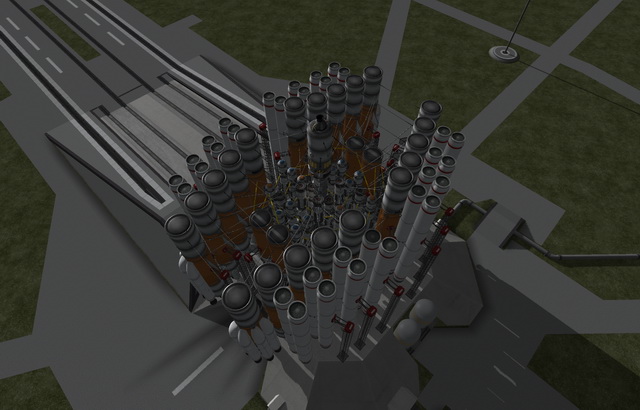
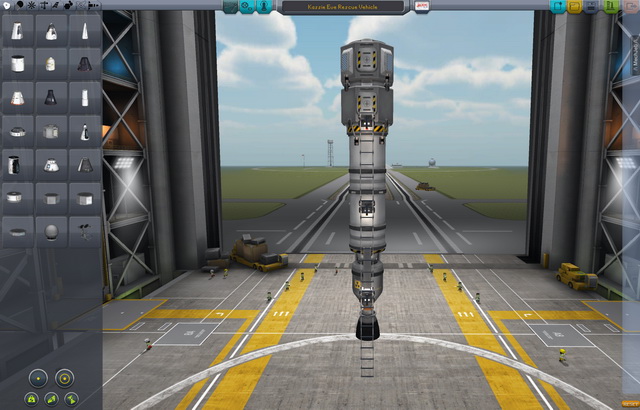
The Kassie IV core module consists of a two Kerbal habitat atop a single Nerva nuclear rocket and a moderate amount of fuel, more than enough to return from Eve to Kerbin. The habitat at the top is the only part of the vehicle that will return to the surface of Kerbin, and it will be my home on the journey from Kerbin to Eve, and then it will host Bill as well on the journey back. The habitat isn’t exactly roomy, but it’s equipped with an exercise wheel, various recyclers, and a large supply of air fresheners. We’ll also have a vat to grow artificial spam, as well as a cupboard of spices, and quite a stash of snacks. The habitat is powered by an isotope thermocouple, supplemented by the exercise wheel. The habitat weighs 1.9 tons, and the complete core with fuel and the rocket weighs 9.1 tons.
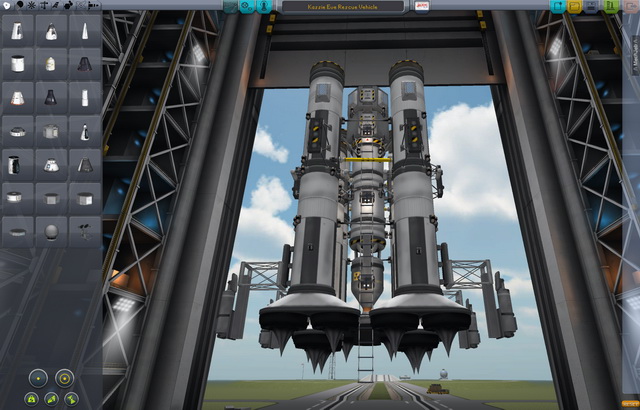
Directly attached to the core vehicle we have six rocket fuselages, each with two aerospike engines. These six elements are arranged in three stages, in asparagus staging where each stage pumps fuel to the next stage inboard for the most efficient use of fuel and to get rid of the dry mass of the tanks as quickly as possible. These stages carry additional batteries to keep the vessel charged during the transit, as well as parachutes and landing gear for the Eve landing.
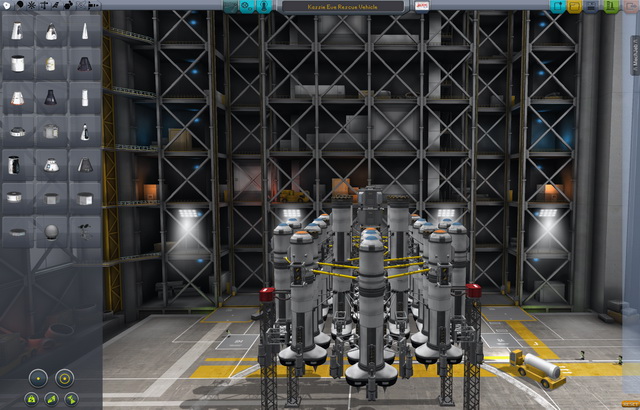
Outboard of the seven core fuselages, there is a ring of sixteen more similar rockets. Each provides another two aerospike rocket engines, as well as additional landing legs and parachutes. These stages will burn down and fall off in pairs, spiraling inwards in balance toward the center from opposite ends. The complete lander as it will land on the surface of Eve weighs 317.8 tons, with 57 engines.
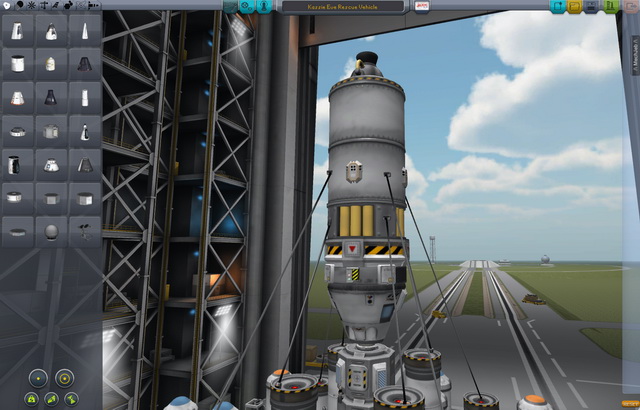
Docked to the top of the lander on the outbound leg of the trip will be the service module. The service module has the capability of returning from Eve with Bill and me in an emergency, but its primary purpose is to serve as an orbital communication link back to Kerbin while Bill and I are on the surface, and also to refuel the lander for the return journey.
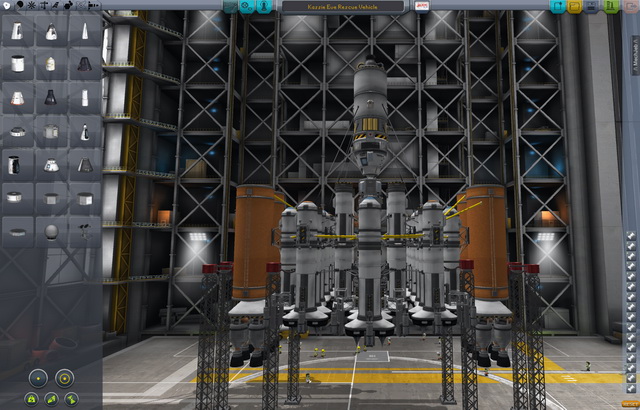
To get the lander and service module from Kerbin to Eve, we have four large stages attached port and starboard on the lander, each with an array of four Nerva rockets. These stages are also hooked into the lander fuel pipeline, so they can provide fuel to the lander’s own Nerva rocket, allowing it to be used as a seventeenth rocket for the interplanetary transfer. In comparison to the Kassie III, we have far more thrust, and it’s much more solidly attached to the lander, so performance should be massively improved.
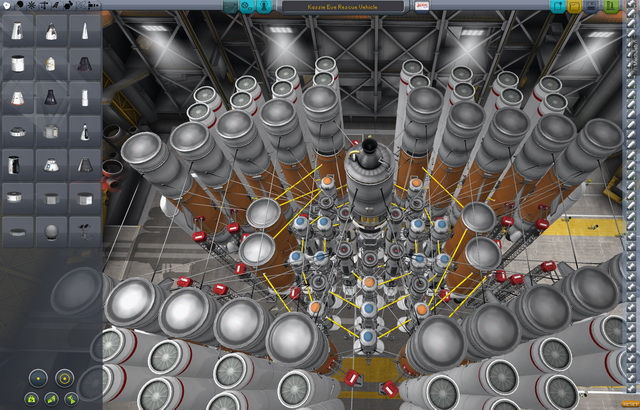
Finally, to get the 528 tons of the interplanetary vehicle into Kerbin orbit, we have the outboard wings of launch boosters. This is a staggering assembly of 95 liquid and solid fuel rockets arranged in six stages, bringing the final total mass of the vehicle up to 2,771 tons. The launcher is so large, in fact, that it overhangs the edges of the launch pad, requiring special care in the placement of the launch towers.
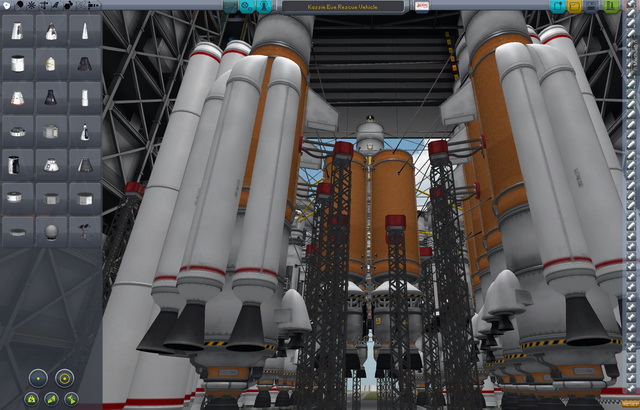
Comments are disabled.
Post is locked.
Hello again, ladies and gentlekerbs, this is Jebediah Kerman, here again to give you a briefing on the ongoing effort to prepare our interplanetary mission to Eve to rescue Bill Kerman.
At our last briefing, I described for you the Kassie III mission, in which Bob Kerman, Lanlo Kerman, and myself each launched in one of the modules of the complete Kassie III vehicle, rendezvoused in orbit, and then attempted a flyby of the Mun as a test of the vehicle.
Unfortunately that mission was less than a complete success, as the vehicle proved both unstable and woefully underpowered for an interstellar journey. Upon our return in the Kassie III lander, the engineering crews refurbished and upgraded the vehicle, producing the vehicle used in today’s mission: the Kassie IV.

Before I get into the details of the mission, I realize that we haven’t yet given the public our usual overview of the craft, and given just how amazing the Kassie IV is, that’s a shame, so I’m going to correct that now.
The complete Kassie IV vehicle masses 2,771 tons fully fueled on the launch pad, with an incredible 169 engines. Unlike the Kassie III, the entire mission vehicle is now one assembly that will depart Kerbin in a single launch, dropping most of it’s mass during the launch to Kerbin orbit, then leaving a module in Eve orbit before landing, discarding most of its remaining mass on the ascent back to Eve orbit from the surface, and then returning from Eve to Kerbin in just the very core of the vehicle.
Let us begin our detailed look at the vehicle with that core.







Let's take a brief break, and when we are gathered again, I'll continue the briefing on the Kassie IV test mission.
Posted by: TheSquirrelPatrol at
04:53 AM
| No Comments
| Add Comment
Post contains 836 words, total size 6 kb.
13kb generated in CPU 0.0137, elapsed 0.0379 seconds.
34 queries taking 0.0316 seconds, 54 records returned.
Powered by Minx 1.1.6c-pink.
34 queries taking 0.0316 seconds, 54 records returned.
Powered by Minx 1.1.6c-pink.









